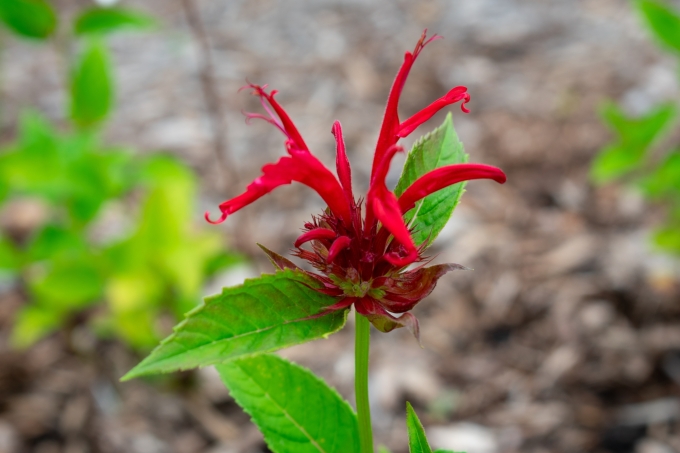Common Name: Jacob Cline Bee Balm
Family: Lamiaceae
Plant Type: Herbaceous Perennial
Native Range: Cultivar of a native species (Eastern North America)
Hardiness Zones: 4–9
Height: 3.0 to 4.0 feet
Spread: 2.0 to 3.0 feet
Bloom Time: Mid to late summer (typically July in Nebraska)
Bloom Description: Large, bright scarlet-red tubular flowers in dense, shaggy flower heads
Sun Exposure: Full sun to part shade (best flowering in full sun)
Water Needs: Medium
Soil Preference: Moist, rich, well-drained soil preferred; tolerates average garden soils
Management Level: Medium
Suggested Use: Pollinator gardens, rain gardens, borders, naturalized plantings
Attracts: Hummingbirds, butterflies, bees
Tolerates: Deer, clay soil, periodic wetness
Notable Features: Somewhat Mildew-resistant selection, bold red flowers, minty aromatic foliage, and taller
Nebraska Growing Notes:
‘Jacob Cline’ is one of the best monarda cultivars for Nebraska, prized for its strong resistance to powdery mildew, a common issue in humid summers. It performs reliably in full sun with moist, organically rich soil but can tolerate part shade, especially in eastern Nebraska.
In prairie-style or pollinator gardens, it adds bold color and draws in hummingbirds and native bees. It spreads by rhizomes and can form sizable clumps over time, dividing every 2–3 years helps maintain plant health and contain growth.
In dry years or drought-prone areas, supplemental watering will improve vigor and bloom production. Cut back after flowering to encourage a second flush and maintain a tidy appearance.
Landscape Use:
Excellent in pollinator beds, native gardens, rain gardens, and mixed borders. Its vivid red blooms stand out in mass plantings and serve as a striking vertical accent. Combines well with Rudbeckia, Eutrochium (Joe-Pye Weed), Liatris, and ornamental grasses.
Caution:
Non-toxic and generally safe for gardens. Aromatic foliage can deter browsing animals. Spreads by rhizomes, may need to be managed in formal plantings.
Garden Locations:
Bed(s) 1, 4, 10, 11 (Planted in our gardens summer of 2025)
Sources:


